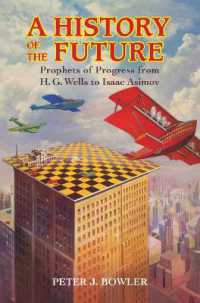Full Description
People from outside of Brasília often dismiss Brazil's capital as socially divided, boring, corrupt, and emotionally cold. Apparently its founders created not a vibrant capital, but a cultural wasteland. However, as Sophia Beal argues, Brasília's contemporary artists are out to prove the skeptics wrong. These twenty-first-century artists are changing how people think about the city and animating its public spaces. They are recasting Brasília as a vibrant city of the arts in which cultural production affirms a creative right to the city. Various genres—prose, poetry, film, cultural journalism, music, photography, graffiti, street theater, and street dance—play a part. Brasília's initial 1960s art was state-sanctioned, carried out mainly by privileged, white men. In contrast, the capital's contemporary art is marked by its diversity, challenging norms about who has a voice within the Brasília art scene. This art demystifies the capital's inequities and imagines alternative ways of inhabiting the city.
Contents
1. An Introduction to the Art of Brasília.- 2. A Historical Overview of the Art of Brasília.- 3. Brasília Unsettled in João Almino's Cidade Livre.- 4. Creative Communion in Nicolas Behr's Brasília.- 5. Ceilândia's Art in Adirley Queirós's Branco sai, preto fica.- 6. Poetry Slams and Brasília's Legacy of Verse Competitions.- 7. Black Contemporary Brasília Poets' Insurgent Books.- 8. Traços, Street Art, and Brasília's Cultural Renaissance.- 9. Epilogue.








